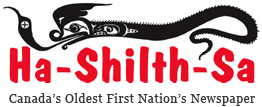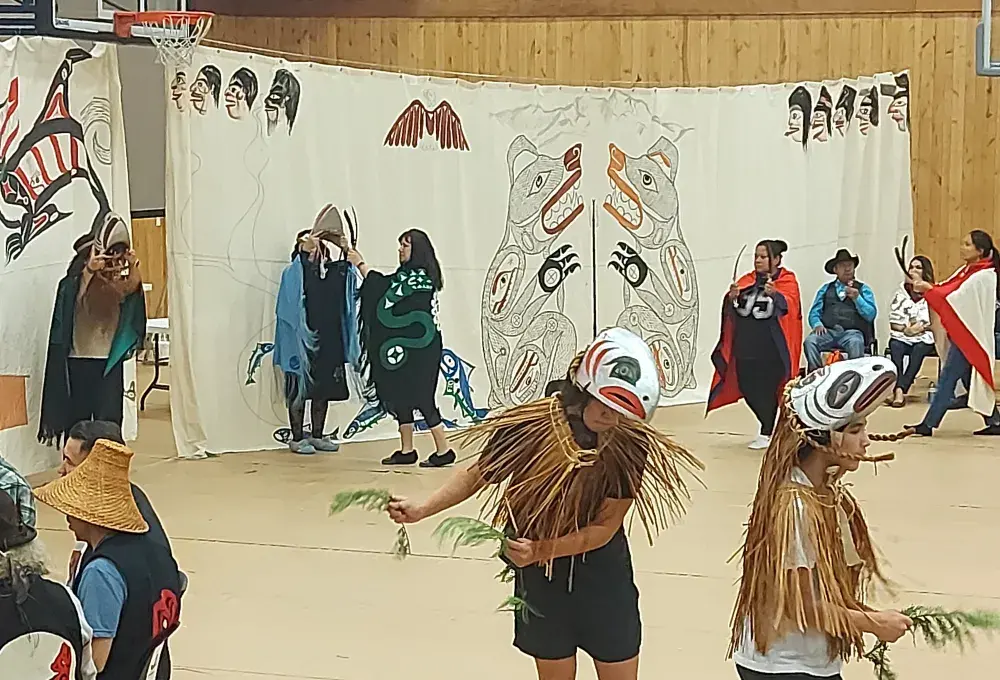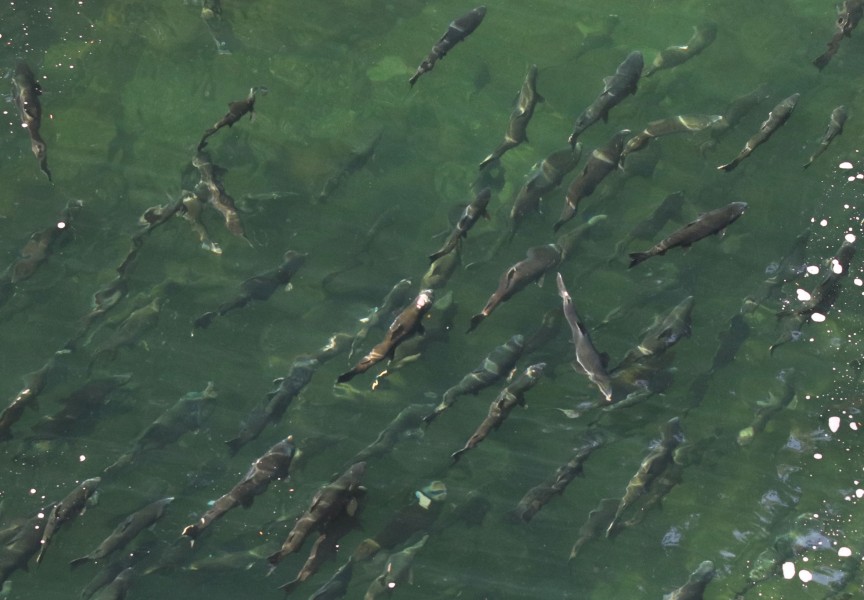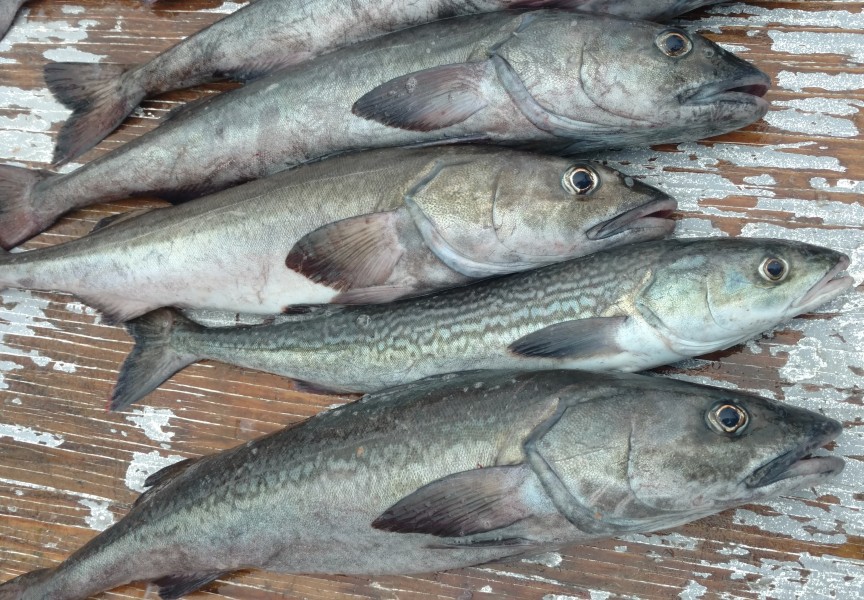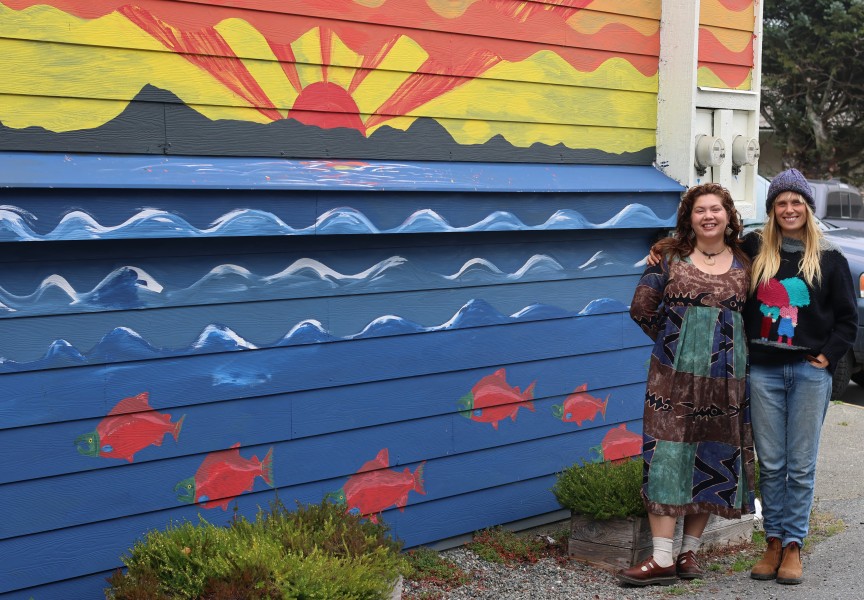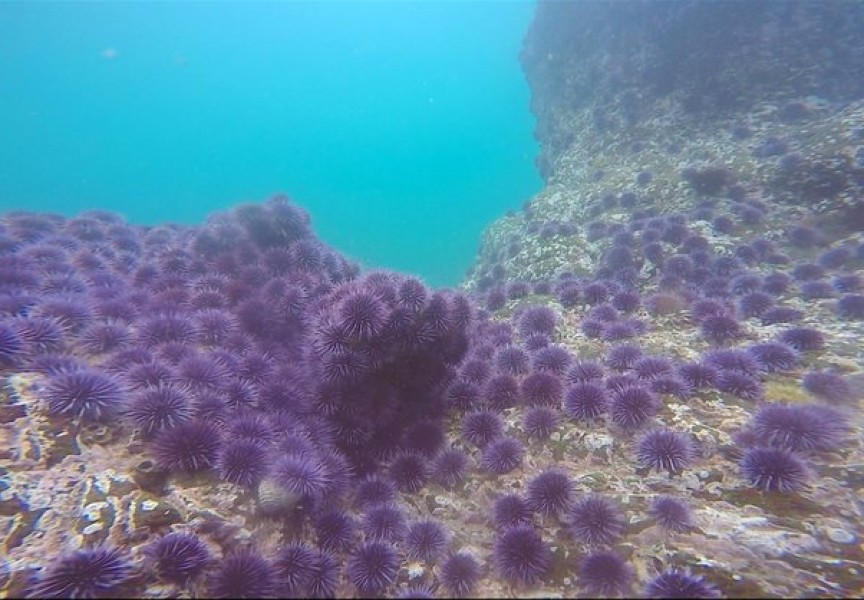With time running out for salmon farming as we know it on the B.C. coast, a potlatch in Port Alberni delivered another blow of opposition to the industry.
Hundreds came to the Alberni Athletic Hall on Nov. 1 and 2 for the potlatch held to celebrate migratory salmon. Hosted by Hupacasath Ha’wilth Tsu Tsii In, Alton Watts, and Hesquiaht elder and artist Aniičačist, Tim Paul, the gathering was held to display a “commitment to the health of migratory wild salmon in the face of continued threats from open net pen fish farms.” The potlatch brought together chiefs from across Vancouver Island and as far south as the Winnemem Wintu Tribe from California, where leaders signed a declaration “on wild salmon and the economic and cultural health of B.C.’s coastal communities”.
“We want to invite you to a feast and look at what fish farms are doing to our waters and estuaries and rivers,” said Paul in an online video inviting people to attend the potlatch.
“Our understanding is that we can not break that cycle of nature and kill those rivers with what’s happening and what is discharged from fish farms in the ocean,” he continued. “We can’t live without the wild stock of migratory salmon, and the fish farms are devastating to those parent streams and killing the life, taking the life out of those rivers.”
The potlatch presents the latest round of opposition to salmon farming on the B.C. coast, following a statement from the B.C. First Nation Wild Salmon Alliance issued last year that listed over 120 Indigenous communities – encompassing most First Nations in British Columbia – who stand behind banning from the ocean the industry standard of open net pens.
With 65 sites still on the B.C. coast – most of which are in Nuu-chah-nulth territory - British Columbia remains the outlier on the Pacific Northwest as the only jurisdiction to still allow salmon farming in the ocean. But more opposition might not be necessary if the federal government goes through with the deadline of June 30, 2029 for all open net pens to be removed from coastal waters.
This isn’t necessarily a good thing for coastal Indigenous communities, according to the Coalition of First Nations for Finfish Stewardship, which lists 17 First Nations that have formal agreements with salmon farming companies. In Nuu-chah-nulth territory this includes the Ehattesaht, Tla-o-qui-aht and Ahousaht First Nations.
“We do not tell our neighbouring communities or people in urban centres how to manage their lands and waters, and they do not have the authority to dictate what happens in ours,” said the coalition in a recent statement. “Canada cannot afford, economically, socially, or morally, to shut down a modern, sustainable, Indigenous-led industry in the face of growing food insecurity, global trade instability, and a worsening housing crisis.”
For over a decade Ahousaht has had a protocol agreement with Cermaq, which operates salmon farms in the First Nation’s territorial waters in Clayoquot Sound. This is valued at $6 million annually in employment, educational supports and transportation assistance, according to Ahousaht Tyee Ha’wilth Hasheukumiss, Richard George.
“Our Ahousaht rights and authority are directly being disrespected,” said George during a Nuu-chah-nulth Council of Ha’wiih Forum on Fisheries meeting Feb. 12.
He was addressing representatives from Fisheries and Oceans Canada at the meeting, noting how the government was breaking its commitment to not remove the salmon farms from his hahuułi. Over 20 Ahousaht members work on the Cermaq sites, offering valuable employment for the remote Flores Island First Nation community.
“That was a verbal commitment,” said the hereditary chief, regarding a past visit from former fisheries minister Dianne Lebouthillier. “We did protocol and honoured her with a mask to cement that in stone, only to be slapped in the face with your transition plan.”
With the 2029 deadline, the federal government has taken the side of the many concerned that fish farms pose a risk to wild salmon through the spread of disease. In 2023 the Pacific Salmon Foundation reported that the closeness of fish in ocean pens “present ideal conditions for amplification of viruses, bacteria and parasites.” The PSF also blames the farms – which usually raise Atlantic salmon – for introducing piscine orthoreovirus to the Pacific coast.
Yet fish farms were rarely mentioned in the PSF’s latest annual report on the state of the species. Aquaculture was listed as one factor among many that threaten Pacific wild stocks, including urbanization, ocean predators, interbreeding with hatchery-raised fish, a warming marine environment and forestry. On western Vancouver Island, decades of industrial logging are blamed for having “stripped much of the old growth forest and significantly altered stream habitats.”
Salmon stocks have been in decline for decades – a trend that has devastated commercial fishing on the B.C. coast – and two thirds of populations remain below their long-term averages, according to the PSF report. But the last year has shown signs of improvement to some species in southern parts of the province.
“Pink salmon are grabbing headlines for their burgeoning numbers throughout the North Pacific, which is good news for salmon-dependent communities and ecosystems,” stated the report. “Pink salmon seem to respond better than other species to a warming ocean and are less exposed to climate changes in freshwater due to their short, marine-dominated lifecycle.”
On western Vancouver Island, the average annual abundance of chinook salmon from 2020-2023 was 355,233 – significantly higher than the average of 242,134 that the PSF tracked back to 1985.
“In west Vancouver Island and east Vancouver Island and Mainland inlets, both spawner and total abundances are well above the long-term average,” said the report of the chinook numbers. “This rebound - also seen on the Central Coast - is driven in part by hatchery enhancement of wild populations.”
